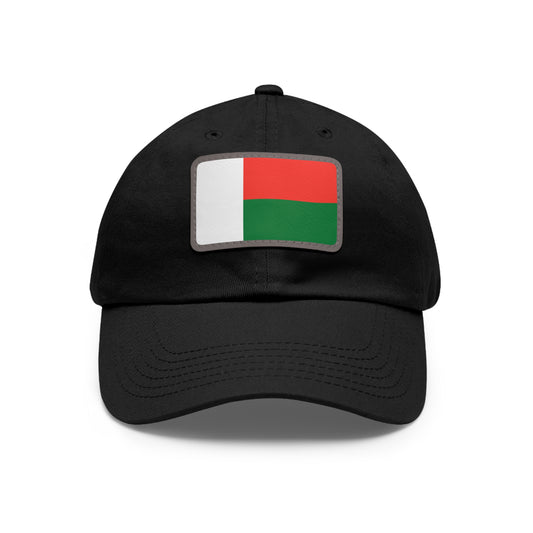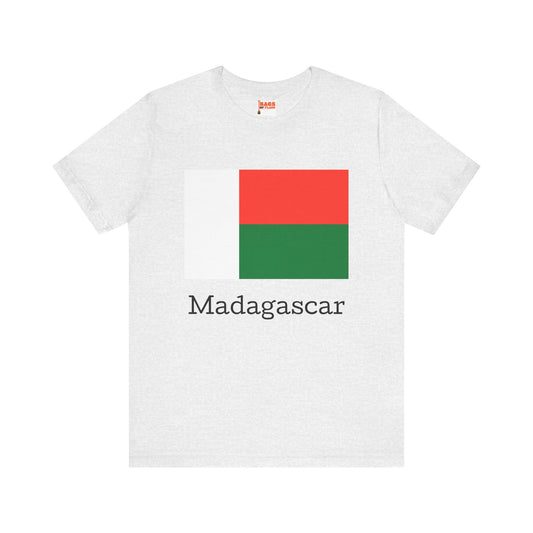-
Madagascar Sweatshirt
Regular price $34.15 USDRegular priceUnit price / per -
Madagascar Flag Sweatshirt
Regular price $34.15 USDRegular priceUnit price / per -
Madagascar Pillow
Regular price $22.65 USDRegular priceUnit price / per -
Madagascar Leather Patch Hat
Regular price $18.85 USDRegular priceUnit price / per -
Madagascar Hoodies
Regular price $34.40 USDRegular priceUnit price / per -
Madagascar T-shirts
Regular price $22.79 USDRegular priceUnit price / per -
Madagascar Flag Hoodies
Regular price $34.40 USDRegular priceUnit price / per -
Madagascar Flag on T-shirt
Regular price $22.79 USDRegular priceUnit price / per
Collection: Madagascar
The Madagascar flag is a unique and symbolic representation of the country's identity. With its striking colors and design, the flag of Madagascar holds historical significance and cultural importance. We will delve into the protocols and intriguing anecdotes behind the Madagascar flag.
Overview of the Madagascar Flag

The flag of Madagascar showcases a distinctive and vibrant design that consists of two horizontal stripes and one vertical stripe, embodying the nation's pride and cultural values. At the top, a horizontal band of red stretches across the flag, followed by a white horizontal stripe. A vertical green stripe along the hoist side complements these two colors. This configuration creates a bold visual statement, distinguishing the flag from those of other nations. Each color on the flag is charged with its own meaning, contributing to the overall symbolism reflecting Madagascar's essence.
The precise arrangement and the choice of colors are deeply rooted in the country's history and aspirations, making the flag a crucial element of Madagascar's national identity. The design's simplicity yet profound symbolism facilitates instant recognition and serves as a unifying emblem for the Malagasy people.
Historical Context of the Madagascar Flag

The adoption of the current Madagascar flag dates back to October 14, 1958, a pivotal moment that preluded the nation's march towards independence from French colonial rule, which was fully realized in 1960. This period was marked by a growing sentiment for national identity and self-governance among the Malagasy people. Introducing a new flag symbolized the country's desire to forge its path and assert its sovereignty on the world stage.
Throughout its history, the flag has seen modifications that reflect Madagascar's changing political and social landscape. The most significant alteration came after the end of the socialist regime in the early 1990s, when the emblem that had come to be associated with that era was removed from the national flag. This change symbolized Madagascar's transition and its people's aspirations for a new direction.
The flag's adoption and subsequent modifications coincide with crucial junctures in Madagascar's history, each serving as a testament to the nation's evolving identity and the collective aspirations of its people. Internal factors, such as national pride and the desire for unity, and external pressures, including colonial rule and the global political climate of the time, influenced the decisions surrounding the flag's design and symbolism.
Symbolism Behind the Madagascar Flag
The colors on the Madagascar flag carry deep symbolic meanings that resonate with the nation's identity and aspirations. The red stripe symbolizes the blood shed for independence, underscoring the country's struggle for sovereignty and the sacrifices to achieve it. This vibrant color also reflects the heritage and continuation of the pre-colonial kingdoms before French colonization. White, forming the middle band, represents purity and peace, highlighting the Malagasy people's desire for harmony and unity within the nation. It serves as a reminder of the importance of maintaining integrity and social cohesion amidst diversity.
The green stripe, positioned along the hoist side, signifies hope and the future, pointing towards the agricultural richness of the country and the potential for growth and prosperity. Together, these colors weave a narrative of resilience, unity, and optimism, encapsulating the essence of Madagascar's past struggles, present achievements, and future aspirations. The flag's design is a testament to the enduring spirit of the Malagasy people and their ongoing journey towards a harmonious and prosperous society.
Current Relevance of the Madagascar Flag
Today, the Madagascar flag plays a vital role in the daily life and national identity of its people. It is a common sight at various significant occasions, flying proudly during national holidays, such as Independence Day, and observed at military ceremonies where it symbolizes the honor and valor of the armed forces. Furthermore, the flag is an essential element in educational institutions across the country, where it is raised to instill a sense of patriotism and respect for the nation's heritage among the younger generation. In the realm of international relations, the flag represents Madagascar at diplomatic events, sports competitions, and cultural festivals around the world, serving as an emblem of the country's sovereignty and its place on the global stage.
Despite its revered status, the flag has been at the center of discussions, reflecting the evolving societal values and the complex history of Madagascar. These conversations often explore the flag's role in uniting a diverse population and its significance in the face of contemporary challenges. As such, the flag continues to be more than just a national symbol; it is a living testament to Madagascar's resilience, unity, and hope for a brighter future, fostering a collective identity among its citizens and representing their aspirations on the world stage.
Additional Facts About the Madagascar Flag
The protocols surrounding the display and treatment of the Madagascar flag underscore its significance to the nation. Notably, the flag must be treated with utmost respect; this includes ensuring it never makes contact with the ground and always occupies a position of prominence when displayed alongside other flags, signifying the sovereignty and pride of Madagascar. The daily ritual of raising the flag each morning and lowering it in the evening further reinforces the respect and honor bestowed upon this national symbol.
An interesting historical footnote is the transition from the French Tricolor, used during the colonial era, to the current flag as a potent symbol of independence and self-determination. This change not only marked the end of colonial rule but also the beginning of a new chapter in Madagascar's national identity, embodying the spirit and aspirations of its people. The adoption of the present flag design was a significant move towards reclaiming the country's autonomy and expressing its unique cultural heritage and values on the global stage.
















